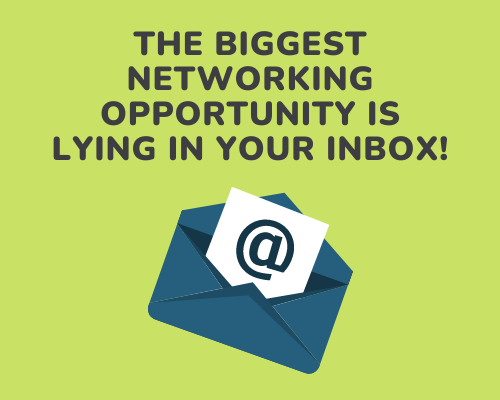
Networking is changing quickly. Being able to connect from a distance is more important than ever since many workers are adapting to a mix of remote and in-office work, and the future of face-to-face meetings is unclear. What’s the next big chance for you to network? It’s cold outreach through emails. If you haven’t given it a shot, here’s how to begin.
First, let’s understand the benchmark for cold outreach. The response rate for a cold email is 1% (ClearBit). But given that it requires low investment, it is a strategy that you should employ in your marketing.
That does not imply that you should feel free to enter someone’s email or DMs and demand assistance. Doing so is a sure-fire way to be ignored. Instead, compose the email with a specific purpose in mind and make it personalised. Most of the points about cold outreach in general have been covered already in previous articles of this season. But below are a few additional things that come handy during cold emailing.
- Signature: Does your recipient understand not only how to contact you (apart from email), but also why they should?An email signature is a great way to put in additional links that you want your receiver to see. Adding your website, social media handles, link to portfolio etc in the signature can be an unobtrusive way to direct the reader’s attention to them. Do check that your signature line is automatically included at the bottom of every email you send. Send yourself an email and think about how it would appear to a receiver.
A signature is an excellent way to personalize each communication you send. It establishes and reinforces your company’s identity. You build brand identification in every person to whom you send emails. Here’s a handy signature generator tool by HubSpot.
- Show your face: Consider incorporating a photo of yourself in your email signature. A photograph in the signature can help make your email look more human. People can see who the sender is. And if you use the same photograph in LinkedIn, the people can instantly recognise you as the sender of the email.If you do not want to add the photograph in the signature, then find a suitable place in your mail body for a photo. Depending on your business, you can use it to make them smile or use it to give your mail a human touch. A splash of visual or a personal touch can help your email stand out.
Make sure your photos are structured correctly–they shouldn’t be pixelated, cropped, or stretched awkwardly.
- P.S: According to a survey by The Radicati Group Inc., 132 billion business emails are received every day in 2018 and these numbers are set to grow. But there is something important missing from so many of those emails – a clear bottom line or a P.S. Yes, that extra line at the end of your mail, even after your signature.Increasing sales of a new product, for example, is likely one of your primary business objectives right now. However, bringing it up naturally inside the body of an email is not always possible. While using a P.S., you can include an additional thought that doesn’t have to be related to the main message. For example, you can always send a quick message that focuses on your main purpose.
Ivan Misner, a networking guru and author of ‘Networking like a Pro’ believes, including a P.S. in your email can assist you to display a message that would otherwise go unnoticed. It’s a technique that a lot of salespeople employ. However, the normal businessperson does not consider it.
You can include something amusing or distinctive that will help you stand out. Here are a few ways to use a P.S. in your email.
- It can serve as a call to action, particularly if you add a link to the product or service you’re promoting.
- Make long-term relationships: Provide a link to your Facebook, Twitter, YouTube, or LinkedIn profiles and encourage people to connect with you on those platforms.
- Something memorable to Include: If that one small item, such as a funny quote or witty joke, makes you memorable to potential customers or partners, it may assist your business in the long run.
- Getting the email address: You’re ready to win your customer now but a basic question arises – how do you reach their inbox if you don’t know the address?You can find and shortlist your prospect from Linkedin but you may not have everybody’s email address.
Cold email may be a new technique for a small business, even though it is very commonly employed by larger organisations. Since the response rate is so low, it will require patience and consistency to see results. But it’s definitely worthy of being included in your marketing strategy.